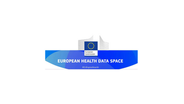- Lloyd Price
Physics and Light : Apple's competitive advantage in Healthcare

I believe Tim Cook and Apple when they say "we have big plans in healthcare, which go beyond wellness apps and tools ... we can make a 'significant contribution' in healthcare"
One of the ways in which they can and are achieving their vision is physics and the application of light in their products.
Ambient light sensors, infrared light, LED lights, light‑sensitive photodiodes, spectroscopy, photoplethysmography, UV light, full spectrum light therapy, phototherapy .... Apple are applying light in new ways to create new standards, solve existing problems and make patients/consumers lives easier.
1) Apple Watch Heart Rate Monitor - photoplethysmography

The heart rate sensor in the Apple Watch uses what is known as photoplethysmography.
This technology, while difficult to pronounce, is based on a very simple fact: Blood is red because it reflects red light and absorbs green light.
Apple Watch uses green LED lights paired with light‑sensitive photodiodes to detect the amount of blood flowing through your wrist at any given moment. When your heart beats, the blood flow in your wrist — and the green light absorption — is greater. Between beats, it’s less. By flashing its LED lights hundreds of times per second, Apple Watch can calculate the number of times the heart beats each minute — your heart rate.
The heart rate sensor supports a range of 30–210 beats per minute. In addition, the heart rate sensor is designed to compensate for low signal levels by increasing both LED brightness and sampling rate.

The heart rate sensor can also use infrared light. This mode is what Apple Watch uses when it measures your heart rate in the background, and for elevated heart rate notifications. Apple Watch uses green LED lights to measure your heart rate during workouts and Breathe sessions, and to calculate walking average and Heart Rate Variability (HRV).
2) Apple Face ID - infrared light
Face ID is Apple's latest move to make security and authentication as convenient as possible. Touch ID is active, requiring that you physically touch a sensor; Face ID is passive, requiring only that you glance at the phone.
Fingerprint technology and facial recognition is used by lots of companies, not just Apple and not just in healthcare. However no other company has combined facial recognition with accessing medical records and smartphones for example. The combination of all three is what gives Apple a competitive advantage in healthcare.
Face ID has set the new standard in remote authentication, identification and registration. The key first step in the patient journey, allowing access to digital health services.
Apple has done what Apple does best, removed a lot of friction for patients/consumers and made a traditionally offline, time consuming and confusing process fast, convenient and easy.
Apple could in theory take this one step further and match the photo/image stored on a government issued document like a driving licence or passport and "match" it against the image stored on the iPhone X using facial recognition.
Payers and providers would then have another level of assurance that the patient/consumer accessing health data was the same person, another advantage in the world of healthcare data protection and information governance.

Inside the notch at the top of the new iPhone X is the TrueDepth camera and sensors. This camera projects over 30,000 dots of light onto your face. The dots are invisible to your eyes. But you can see them through an infrared camera.
The iPhone X's camera analyzes the dots of light on your face and compares it to the image made when Face ID was set up. If they match, the phone unlocks.

Apple's Face ID system uses Apple's Machine Learning algorithms and a "Neural engine" hardware component built into the A11 processor to analyze and recognize your face.
This includes keeping up to date with changing appearances, such as when you're growing a beard or wearing sunglasses. (The infrared light can see through those sunglasses to detect your gaze, and the system will still recognize you if enough data points match.)
3) Apple Watch non-invasive glucose monitoring solution - spectroscopy?

It is widely rumoured that Apple is working on sensors that non-invasively and continuously monitor blood sugar levels. For example CNBC recently reported that Apple hired a team of around 200 PhDs as part of its effort on this front.
The method by which Apple could potentially non-invasively monitor blood sugar levels is believed by many to be the application of light and spectroscopy.
First envisioned by Michael Feld, the late MIT professor of physics and former director of the Spectroscopy Laboratory, the technique uses Raman spectroscopy, a method that identifies chemical compounds based on the frequency of vibrations of the bonds holding the molecule together.
The technique can reveal glucose levels by simply scanning a patient’s arm or finger with near-infrared light, eliminating the need to draw blood.
Researchers in the Spectroscopy Lab have been developing this technology for about 15 years.
One of the major obstacles they have faced is that near-infrared light penetrates only about half a millimeter below the skin, so it measures the amount of glucose in the fluid that bathes skin cells (known as interstitial fluid), not the amount in the blood. To overcome this, the team came up with an algorithm that relates the two concentrations, allowing them to predict blood glucose levels from the glucose concentration in interstitial fluid.

4) Future applications of light by Apple in Healthcare - UV Light for Skin Disorders?
Doctors use UV light to treat patients with vitamin D deficiency and other kinds of skin disorders.
Light therapy and phototherapy treatments involve the use of specific wavelengths of light to treat many medical conditions including mood disorders; skin disorders such as psoriasis, eczema, vitiligo, and acne; sleep disorders; wound healing; and photodynamic therapy (PDT).
"we have big plans in healthcare, which go beyond wellness apps and tools ... we can make a 'significant contribution' in healthcare"
Could we see Apple make a "significant contribution to healthcare" by moving into the world of delivering care instead of just monitoring it ?
In 3 to 5 years time will patients be able to use an Apple device to treat vitamin D deficiency and other kinds of skin disorders?

5) Future applications of light by Apple in Healthcare - Full Spectrum Light for SAD?
Seasonal Affective Disorder (SAD) occurs during winter when people are exposed to fewer hours of natural sunlight. Symptoms of this condition include anxiety, fatigue, depression, overeating, weight gain and oversleeping.
Using full-spectrum lights as light boxes or special bulbs and lamps can help reduce the negative symptoms of SAD.
In 3 to 5 years time will patients be able to use an Apple device to treat Seasonal Affective Disorder?
Could Apple apply the design and application of sound waves to the design and application of light waves?

6) Future applications of light by Apple in Healthcare - Vital Signs
Apple's patent application #20170354332 filed in August 2017 talks about collecting health data which may include: a blood pressure index, a blood hydration, a body fat content, an oxygen saturation, a pulse rate, a perfusion index, an electrocardiogram, a photoplethysmogram, and/or any other such health data.
The patent application shows us how they want to take the iPhone to the next level for health as it relates to allow users to measure their vitals.
"Apple's invention covers systems, apparatuses, and methods related to an iPhone (iPad, Apple Watch etc) that computes health data. The device may include a camera, an ambient light sensor, and a proximity sensor.

The electronic device may use one or more of the camera and the proximity sensor to emit light into a body part of a user (such as a finger, and ear, and so on) touching a surface of the electronic device.
The electronic device may use one or more of the camera, the ambient light sensor, and the proximity sensor to receive at least part of the emitted light reflected by the body part of the user. The electronic device may compute health data of the user based upon sensor data regarding the received light.
In this way, the health data of the user may be detected utilizing an electronic device including a camera, ambient light sensor, and proximity sensor without making the user obtain access to a dedicated fitness and/or wellness device."

To conclude, Apple are clearly applying the laws of physics and developing new ways to use light in order to not only monitor and collect patient data (Enabling Care), but also to potentially offer treatment for medical conditions (Delivering Care) across their range of devices.
Let's continue the discussion, please tweet @lloydgprice your thoughts, ideas and comments :)







